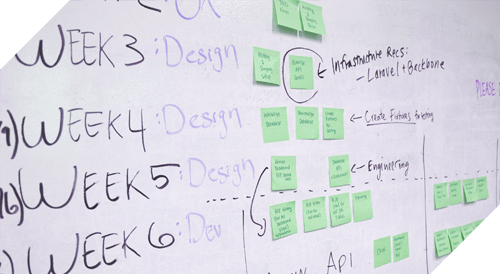Last updated on
You may be looking to have someone build your first website or you may have hired a designer before, but were left a little in the dark during the whole process. Here at JV Media Design (JVM Design) we’ve spent many years helping clients through the process and educating potential clients as to how they can be a part of ensuring a successful website design or redesign project.
A key thing to remember, is that you are an important part of your project and a designer or team can’t complete it properly and in a timely manner without your help and cooperation. To keep the project on track and on time, here are some guidelines for being a great design client.
#1
Be very clear on both your goals for the website project and your target market(s).
For help on this, you might check out, “How to Determine Goals for an Effective Website Project” or “How to Determine Objectives for Your Business Website”. We consider this information a requirement before we even start a project because we know successful projects are the result of knowing this type of information up front.
#2
Always keep your target audience in mind during the project.
It can sometimes be difficult to not personalize everything to your own tastes. You might find our article, “Your Small Business Website: It’s Not About What You Like Best“, helpful to read.
#3
Be excited and invested in your project!
It may seem silly to have to say this, but projects run smoother when the client is excited to be involved and working towards their goals with their chosen designer.
#4
You need to be fully aware of the scope of the project as stated in the design agreement.
It’s also important to understand that while a reasonable number of changes and revisions are expected on a website design project, a point may be reached where multiple changes, additions, and modifications will require an addendum to the agreement, an extension of the timeline, and additional costs.
#5
If you can not be available the entire project, you must appoint one person from your business to act as a contact.
This person should have either full decision making authority for the project or responsibility for discussing the details of the project and its progress with you, to ensure that each phase meets with your approval and is done to your satisfaction.
#6
During each phase of the project, you will need to provide feedback.
If you are unsure at any time about the type of feedback you should be providing, it is the designer’s job to properly explain what is needed. Providing feedback in a timely manner helps to avoid unnecessary delays in the completion of your project.
#7
If you are not utilizing professional copywriting services, then you will be responsible for generating and delivering the content.
This is one of the top ways your project can get sidetracked and delayed. If you’re thinking about saving a few bucks by doing the copy yourself, you might want to have a look at, “5 Reasons You Want a Pro to Write Your Website Copy”. Make sure the copy you deliver is owned by you, accurate, has been proofed, and is totally ready to be placed on your website. Please do not deliver content via non-electronic means (such as paper documents through snail mail). If you can not, expect to pay a charge to have any documents retyped. If you will need PDF documents available for download anywhere on the site, provide those in PDF format.
#8
Any images that are to be placed on the site should be clearly marked where they go and be the largest format you have.
It’s very easy to shrink an image, but impossible to enlarge it without a loss of quality. Also, please ensure that you own the rights to any images you provide to your designer. This means that you took the photo yourself (or had a professional photographer do it), purchased the photo from a legitimate stock company, or otherwise obtained full rights to use the image on your website.
#9
When it comes to testing of the website, a client is often involved after the designer/programmer has done the initial QA (quality assurance).
You will need to fully examine, proofread, and test the finished website, before giving your final approval. If any errors are found after you give your final approval, you will usually be responsible for the cost incurred in correcting them unless it is a programming error covered by any warranty in the design agreement.
You’re a full partner in your project and its timely and successful completion depends on your full attention and following the guidelines above. For further reading, download our ebook, “50 Tips for Working with Designers”.
















